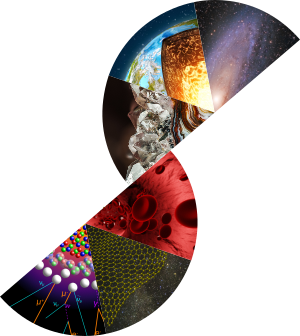Since 1970, an increasing number of researchers have focused their attention on the pollution that is caused by runoff water(Müller et al. 2020). They have supplied data on the amount of metals and hydrocarbons that are present in the water's particulate component that is higher than 0.45 microns. More recently, researchers have expanded their focus to include the colloidal fraction, which consists of particles with sizes ranging from 10 microns to 10 nm and is known for having the highest mobility(Wikström et Österlund 2016; Béchet et al. 2009; Dang, Jean-Soro, et Béchet 2023). The findings of these studies have thus brought to light the need to acquire additional information on the nanoparticulate (NPs) fraction. As a result, there has been a rise in recent years in the number of research projects focusing on nanoparticles in stormwater management (Maiga, Mamba, et Msagati 2020; Yang et al. 2021; Gonzalez de Vega et al. 2022)
Within the context of urban stormwater management, the primary purpose of this thesis is to examine the interaction between natural NPs and natural organic matter (NOM) that are present in aqueous phases and in the sediments of basins. The first step in this thesis is to investigate the presence of inorganic NPs that may be floating in the runoff draining from the Cheviré pond. Since studying a system consisting of both real organic matter and nanoparticles can be confusing at first, the complexity of the system is reduced by using simpler model substances of NOM and NPs.The study will be carried out using the SP-ICP-MS technique available at the water and environment laboratory. Besides that, additional methods that are available in the laboratory, such as fluorescence, UV-Vis, and DLS, are employed in order to obtain data. Additionally, the NMR (liquid/solid) approach will be utilized to supplement the information gathered from the methods mentioned regarding these interactions. In this regard, a collaborative research program has been created between both the (CNRS) and the University of Toronto (UofT) to work on the NMR methodology to explore the interaction between NPs and NOM.
Dang, Du Phuc Tho, Liliane Jean-Soro, et Béatrice Béchet. 2023. « Pollutant Characteristics and Size Distribution of Trace Elements during Stormwater Runoff Events ». Environmental Challenges 11 (avril): 100682. https://doi.org/10.1016/j.envc.2023.100682.
Maiga, Deogratius T., Bhekie B. Mamba, et Titus A. M. Msagati. 2020. « Distribution Profile of Titanium Dioxide Nanoparticles in South African Aquatic Systems ». Water Supply 20 (2): 516‑28. https://doi.org/10.2166/ws.2019.185.
Müller, Alexandra, Heléne Österlund, Jiri Marsalek, et Maria Viklander. 2020. « The Pollution Conveyed by Urban Runoff: A Review of Sources ». Science of The Total Environment 709 (mars): 136125. https://doi.org/10.1016/j.scitotenv.2019.136125.
Wikström, Alexandra Andersson, et Heléne Österlund. 2016. « Size Fractionation of Dissolved Metals in Stormwater in Umeå, Sweden », 5.
Yang, Yuan, Xin Liu, Lin Luo, Wenjing Wei, Qiang Wang, et Jiachao Zhang. 2021. « Quantitative Detection of Zinc Oxide Nanoparticle in Environmental Water by Cloud Point Extraction Combined ICP-MS ». Édité par Haijian Bing. Adsorption Science & Technology 2021 (mai): 1‑10. https://doi.org/10.1155/2021/9958422.

 PDF version
PDF version
